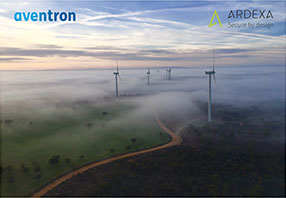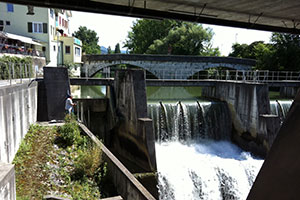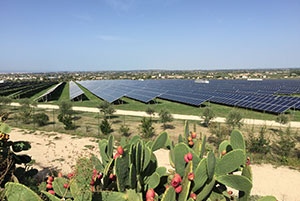 Ardexa is a Canberra-based company providing high-security software and services for the Internet of Things. Formed by George Cora and Dave Mohr in 2013, the company develops their own edge and cloud software to connect small and large machines, automation devices and renewable power plants to the cloud. They work across a range of industries including energy, agriculture, manufacturing, automation and transport.
Ardexa is a Canberra-based company providing high-security software and services for the Internet of Things. Formed by George Cora and Dave Mohr in 2013, the company develops their own edge and cloud software to connect small and large machines, automation devices and renewable power plants to the cloud. They work across a range of industries including energy, agriculture, manufacturing, automation and transport.
CEO, George Cora explains, “We have developed a tool that can very quickly, connect to, and collect data from, remote plants. Some of these plants have in excess of 50,000 variables, which need to be collected every 5 minutes or less”.
“We collect that data, put it into our cloud and then we share it with the people the data owner or plant owner says we should share it with. We provide our services to wind parks, hydro stations, big solar farms (up to 250MW sized plants and sometimes smaller farms like a 100-kilowatt solar farm sitting on top of a train depot in Basel, Switzerland”.
This technology allows clients to securely access machine data, as well as allowing manual and automatic machine control.
George says their edge devices run in unattended installations with very little or no management from local staff.
Ardexa now has approximately one and a half gigawatts of renewable power that they monitor around the world. To put it in perspective, that would be a $3 billion investment that Ardexa is monitoring.
“That would be enough to power half of Victoria with just renewables and it's all our own software,” says George.
Solving problems for clients
 Ardexa helps their clients solve a variety of problems, including establishing machine connections, improving machine and plant efficiency, reducing operational costs, improving machine and plant cybersecurity, building digital transformation and sharing data.
Ardexa helps their clients solve a variety of problems, including establishing machine connections, improving machine and plant efficiency, reducing operational costs, improving machine and plant cybersecurity, building digital transformation and sharing data.
“We provided a solution for a 50-megawatt solar plant in Toledo, Spain. From this plant we are collecting data from 50,000 variables every five minutes. The plant has three square kilometers of solar panels and the solar panels track the sun. Each and every one of those panels will be collecting data on the sun angle, problems with a motor - is it moving or is it not, and then all the inverters. That’s a lot of variables. We then pass that data on to analysts, plant operators and to the owners, so they can have a look at it.
“A wind turbine, like the ones you see out at Lake George, each of those will collect about 1,000 variables of data from every tower - everything to do with gearbox oil, temperature, gearbox oil pressure, blade temperature etc.”
Exporting to Australia
George says Ardexa export’s 99.9% of their products and services internationally, to the UK, Switzerland, France, Austria, Germany, Spain, Italy, Norway, Ireland, The Netherlands, USA and China. Until recently Ardexa had almost no clients in Australia.
“We are now exporting to Australia,” says George.
“We are going to be supplying our products and services to Australia's largest solar farm in South Australia by selling to a Spanish company”.
George explains that a lot of the solar plants are owned by overseas entities because they were quicker to embrace the technology than Australia.
“Australia is good at farms and mining, but European companies are really big into renewables such as Danish companies like Vestas that provide wind turbines”.
Ardexa will be selling their services to overseas firms who own and operate these assets in Australia.
The impact of COVID-19
 When the pandemic hit, Ardexa had been growing rapidly for some time.
When the pandemic hit, Ardexa had been growing rapidly for some time.
“We're now at the point where we're not a startup anymore and where a year or two ago we might have had one or two irons in the fire, I think now we've got about 15 or 20,” says George.
This meant the pandemic presented a number of challenges.
1. Managing a geographically dispersed workforce
Ardexa’s has staff in 5 countries, the USA, Germany, Spain, Australia and Austria.
George says one of the challenges of working remotely, especially when you're talking about developing software for the cloud, is that there is a lot of security stuff that you need to be wary of.
“We made sure everyone had the appropriate security and credentials to work from home. You also have to have the right management structures in place, so that you aren’t monitoring people on what time of day they come into work or when they go home.. as that's now irrelevant.
“You are not looking at what the outputs are, but what the outcomes are”.
George says that when it comes to working remotely and ensuring operational continuity, it’s important to be able to share and collaborate.
“We use Slack a lot and started using it about 6 years ago. Having those structures in place allows us to be able to collaborate in real-time. Some tools are better than others, so you have to really find the right tool for your business”.
Ardexa has now developed a workforce that could literally "work from anywhere". George feels that they have become much more responsive to client needs and should they face another hard lockdown in any number of countries, Ardexa should be able to continue operations unhindered.
2. Reducing supply chain risk
Ardexa relies heavily on the supply of industrial computer hardware. Until recently the devices were built in Taiwan, however, most of their clients are in Europe. To reduce supply chain risk in terms of delivery delays, George says they have looked at sourcing hardware from Europe.
They restructured their hardware supply chain to ensure they had multiple supply points in the major territories.
“We can get hardware from England, from Germany, basically from anywhere. So, we've diversified that aspect of our supply chain. This was done by appointing preferred supplies that would service each region, thereby reducing reliance on single suppliers or geographies.
George said they also had to find a way to make installations of the equipment into remote power plants easier and quicker.
“Someone loads software onto the computer, it gets shipped to a station and a field technician connects it up to the ethernet port there. We do the rest from Canberra or Vienna or whoever's task it is to actually connect the station up”.
“If you go back three years, it used to take us a week to do that. Now, it takes us about 60 seconds, depending on the size and complexity of the plant.
“Because of COVID we sped up the process and now we’re way ahead of our competitors. We can actually start collecting data from a wind farm within 15 seconds of installing and we can do that remotely and securely.
“Some of our competitors have to send people out to the plant to do that which is a problem with COVID. Different countries have different lockdown regulations. And then they have to re-engineer their software which will take them about four years. They don't have the time to do that. Some of our competitors are charging a zero or 2 more than we do to implement; how are they going to compete?
“We had to get the software to a state where we can basically do automatic remote installation”.
3. Building resilience
George says this is the third crisis the owners of Ardexa have survived.
“We survived the dotcom crash; the global financial crisis; and now this one. All of these crises have presented opportunities. In some cases, they presented opportunities because the Australian dollar fell. In some cases, competitors were taken out; and in some cases, customers said they wanted to do things differently.
“We can see a shift, for example, in the way people work. You have to be receptive to these changes and listen to what the clients are doing. You also have to listen to what the wider community and the world is doing. What is happening to supply chains? To people? How do people want to work? How do they not want to work?”
George says that to be able to adapt to the changing environment is easy to say and hard to do.
“You’ve got to understand your environment and see the opportunities that currently don't exist. If you've ever done art, what you're doing is looking at the negative spaces. If over time you have trained your brain to look only at the positive space; how do you find something that's not there?”
George believes that competition is one of the best ways to improve your business.
“You have to move quickly and have the speed to adapt as technology is getting faster in terms of what can be done. However, you must still ensure that your products and services are built on solid principles that will stand the test of time”.
George says that Ardexa has been able to maintain their 100% per annum growth rate through this period. He believes this is due to a number of factors including the structured remote selling process which utilises local partner resources, with local languages and customs. This is supported by centralised technical resources in sales support roles. This allows Ardexa to develop globally competitive products.
An initiative of the ACT Chief Minister’s Export Awards
The ACT Chief Minister’s Export Awards aims to showcase and celebrate the achievements of Canberra region exporting businesses. These Canberra and region businesses transact significant parts of their business activities (legal, accounting, production, research etc.) through the ACT as they develop international markets. The ACT Chief Minister’s Export Awards aims to build the pathway for new and emerging Canberra region businesses seeking to internationalise their business. If you are a new or existing exporting businesses in the Canberra region, you can access a range of support as well as network with other exporting businesses, including
The ACT TradeStart Program helps ACT exporters to achieve long term success in international markets. The TradeStart program allows the ACT Government to work closely with Austrade and access key Austrade resources such as their export database, trade mission activities, their off-shore offices, intelligence and international connections for the trade and investment activities to support ACT exporters.
The International Business Engagement Program is being delivered by Canberra Business Chamber on behalf of the ACT Government. Its main objective is to maintain, rebuild and find new opportunities for Canberra and region businesses to engage internationally. The program focuses on building the Territory’s exporting community; providing training and support by facilitating seminars and workshops; creating links between local industry and other government support programs; assisting the ACT Government in co-ordination of business trade delegations (outbound and inbound).


